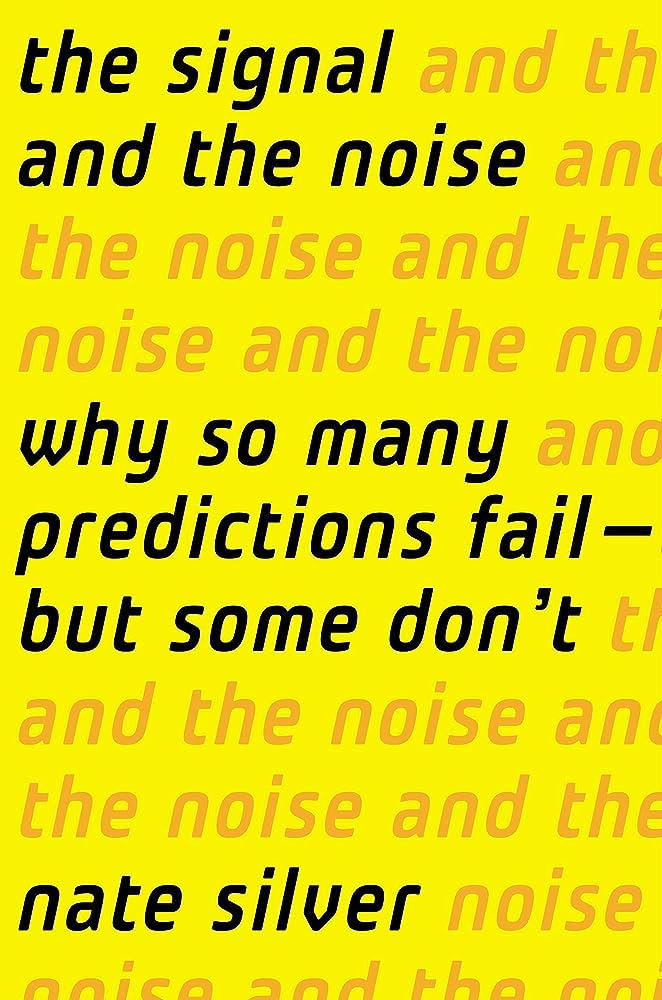The Signal and the Noise by Nate Silver is a captivating exploration of the intricate art and science of prediction. With a blend of meticulous research, engaging storytelling, and a keen analytical eye, Silver navigates the treacherous waters of forecasting to reveal why some predictions flourish while others flounder.
Silver’s prowess lies not only in his ability to dissect the mechanics of predictions but also in his gift for making complex ideas accessible to a broad readership. He artfully balances the technical aspects of statistics, probability, and modeling with real-world examples that span domains as diverse as economics, climate science, and sports. This skillful storytelling makes the book a page-turner even for those without an in-depth understanding of the subject matter.
One of the book’s standout qualities is its emphasis on the nuanced relationship between the signal—the meaningful information in a dataset—and the noise—the irrelevant or chaotic elements that can lead predictions astray. Silver argues that a successful predictor must discern the signal from the noise, a task that’s often more challenging than it seems. By weaving historical anecdotes and modern case studies, he underscores how human biases, overconfidence, and the allure of a simple narrative can lead even the most intelligent individuals astray.
Silver’s examination of prediction failures is both enlightening and humbling. He dissects high-profile forecasting blunders, revealing how they were driven by factors ranging from inadequate models to misinterpretations of historical data. Through these analyses, readers gain a deep appreciation for the complexities of the predictive process, the limitations of human intuition, and the constant need for model refinement and iteration.

However, the book isn’t merely a catalog of failures; it’s a celebration of success stories too. Silver lauds individuals and organizations that have harnessed the power of data and statistical reasoning to make accurate predictions. His in-depth exploration of the factors that contributed to their triumphs provides invaluable insights for anyone seeking to improve their forecasting abilities.
While Silver’s engaging writing style and illustrative examples make “The Signal and the Noise” an accessible read, there are moments when the book dips into technical territory that might challenge readers less familiar with statistical concepts. Additionally, some readers might find the occasional tangents into baseball statistics and political analysis less compelling if those topics don’t resonate with them.
The Signal And The Noise explains why so many predictions end up being wrong, and how statisticians, politicians and meteorologists fall prey to masses of data, when finding important signals is mostly a matter of being cautious, diligent and, most importantly, human.
In conclusion, “The Signal and the Noise” is a compelling tour de force through the realm of predictions, brimming with insights that apply not only to statisticians and analysts but to anyone intrigued by the nature of uncertainty in our world. Silver’s ability to unravel the intricacies of prediction, while emphasizing the necessity of humility and adaptability, makes this book an essential read for those who want to navigate the sea of information with a clearer understanding of what’s truly worth listening to amidst the noise.
Here are 3 lessons to help you tell the signal from the noise:
- Most economists try to predict too accurately and are too confident about their skills.
- Every prediction always needs the proper assessment of a human being.
- You can use Bayes’ theorem to account for errors in your own predictions.
PS: Post created with help from ChatGPT
Discover more from World Of Marketing
Subscribe to get the latest posts sent to your email.
